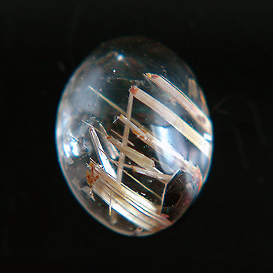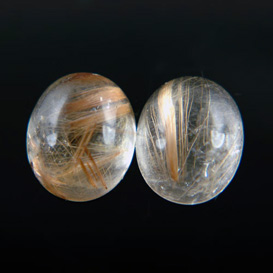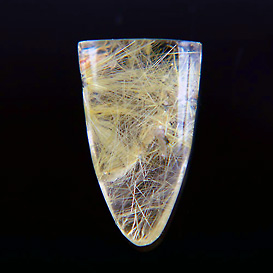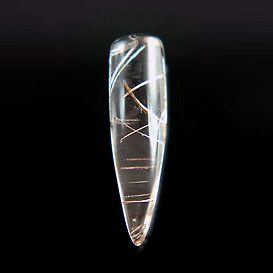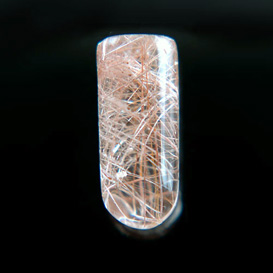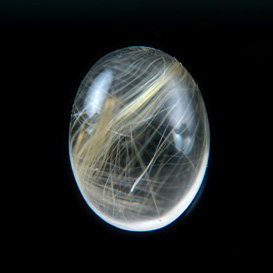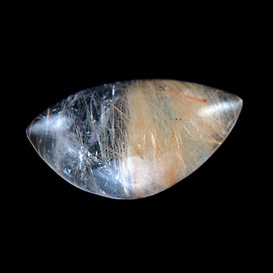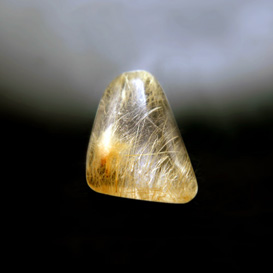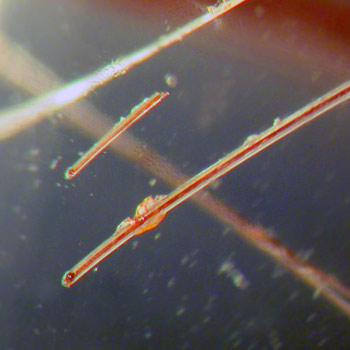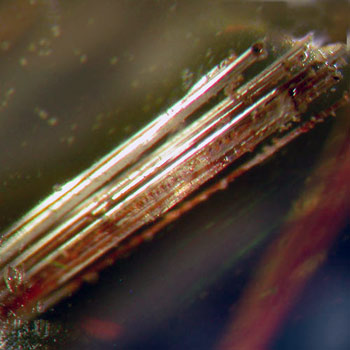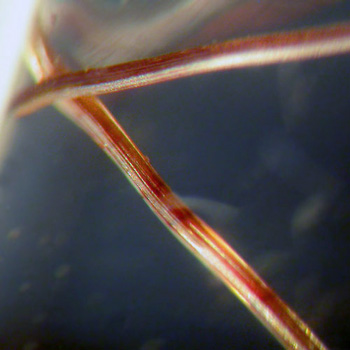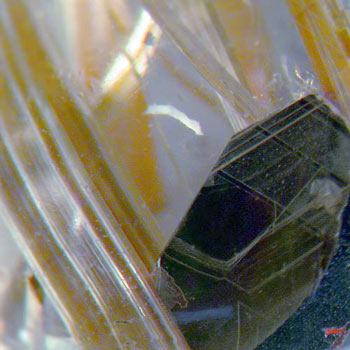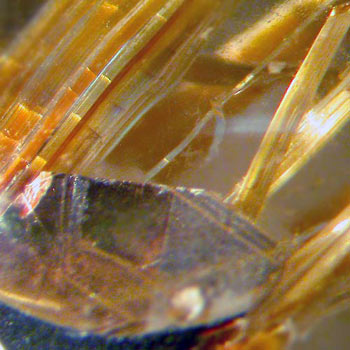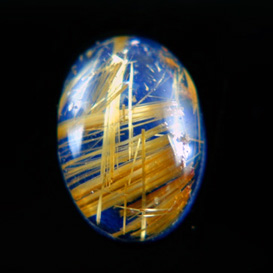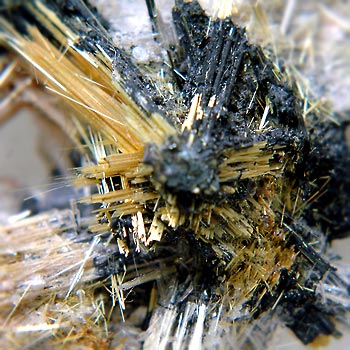| Quartz with rutile inclusions is not that uncommon, but nicely transparent quartz not over-run with rutile is a premium material. The rutile (titanium dioxide) crystals can be silver, yellow, golden, straw color, or even nearly black.
In most of the stones, the titanium dioxide (rutile) grew first in a cavity, and was later surrounded by the growing quartz crystal. In some cases the rutile seems to have been "up-rooted" from its growing surface and has become completely suspended in the quartz.
The most highly prized materials contain hematite which grew first, followed by rutile growth (and here's the important key) ... the rutile grew bounded by the hexagonal shape of the hematite forming 6 rayed rutile stars. This entire mass was then incorporated in the quartz. I have no example of this type of material in quartz, but the last image shows the rutile in a star type pattern without the quartz.
Sample of rutilated quartz can be made into attractive doublets using a colored material at the back. The transparent quartz lets the color show through and contrasts with the rutile. See the last cabochon on the page with the Lapis backing.
|


